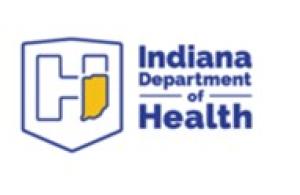
September is Sepsis Awareness Month!
Source: Sepsis Awareness Month | Sepsis Alliance
What is sepsis?
Sepsis is a life-threatening emergency when your body’s response to an infection begins damaging vital organs and can often cause death. Normally, your immune system works to fight any germs to prevent infection, but sometimes the immune system stops fighting the “invaders” in the body and begins fighting itself, which is the start of sepsis. Some people are at higher risk of developing sepsis, because they are at higher risk of contracting an infection, including infants, older adults, and those with chronic illnesses or weakened immune systems.

Did you know?
Source: Sepsis Awareness Month | Sepsis Alliance
- Every year in the United States, over 1.7 million people are diagnosed with sepsis.
- Sepsis is the leading cause of death in U.S. hospitals – taking a life every two minutes.
-
Approximately 350,000 adults die from sepsis every year in the United States.
- That is more than opioid overdoses, breast cancer, and prostate cancer combined!
-
Over 75,000 children develop sepsis each year in the United States – that’s 200 children a day!
- Approximately 6,800 children die from sepsis.
- Sepsis is the leading cause of hospital readmissions, costing more than $3.5 billion every year.
- Infants from families without health insurance are 3 times more likely to die from sepsis.

Signs and Symptoms
Spotting the symptoms of sepsis early could save lives. Take the TIME to learn the symptoms.
T – Temperature – higher or lower than the normal body temperature of 98.6 degrees Fahrenheit.
I – Infection – look for the signs of an infection at the localized location or if it has spread. There may be additional signs of infection, such as fever, fatigue, or pain.
M – Mental decline – sepsis can affect an individual’s mental status, such as becoming confused or experiencing more sleepiness.
E – Extremely ill – many sepsis survivors described that when they were ill, it was the worst they have ever felt.
Children experiencing sepsis may have different symptoms, so look for these signs in a child:
- Feels abnormally cold to the touch
- Looks bluish or has very pale skin
- Has a rash that does not fade when pressed on
- Rapid breathing
- Has a convulsion
- Is very lethargic or difficult to wake up
Addition signs for children under the age of 5:
- Not eating or drinking
- Repeated vomiting
- 12 hours without urinating
If you suspect sepsis in your child, immediately seek emergency care.

Prevention Strategies:
Sepsis can be caused by any type of infection – including bacterial, fungal, viral, or even parasitic. Sepsis prevention is only possible by preventing infections with good and consistent hygiene and avoiding others who have infections.
Viral infections are caused by viruses. There are vaccines that specifically target and prevent diseases caused by viruses. Vaccinations train the body to recognize the virus, allowing the immune system to respond more effectively if exposed in the future. By creating this immunity, vaccines reduce the likelihood of infections that can lead to severe complications, including sepsis. Vaccines protect against vaccine-preventable diseases, ultimately protecting individuals and communities from the potentially life-threatening consequences of infections.
Bacterial infections will often be treated with antibiotics for treatment, following a bacterial infection diagnosis.
- Follow the instructions regarding how and when the medication should be taken (ex: with/without food, before/after meals, etc.) and take the medication on time
- Finish the full course, even if you are feeling better or noticing signs of improvement
Caring for wounds properly can help prevent infections. Every cut, scrape, or break in the skin can allow bacteria to enter the body, causing infections. Here are tips for caring for wounds:
- Always wash your hands before touching an open wound
-
If the wound does not need stitches, rinse the area and the surrounding area with water to remove any dirt or debris that may be in the wound
- Stitches might be the best option for wounds that are deep, gaping, or jagged around the edges – see a healthcare provider
- Cover the wound to protect it from dirt or clothing – if desired, antibiotic cream can be applied before covering
-
Watch for signs of infection:
- Redness
- Skin is warm to the touch
- Increased pain
- Discharge from the wound
Fungal and Parasitic infections can be treated with specific medications.
The most important infection prevention tool – hand washing
- It is important to teach children how to properly wash their hands

Source: Communication Resources | CDC
Thank you for helping make communities safer in Indiana! Please feel free to contact Olivia Hesler at OHesler@health.in.gov with any questions or to request additional information.
